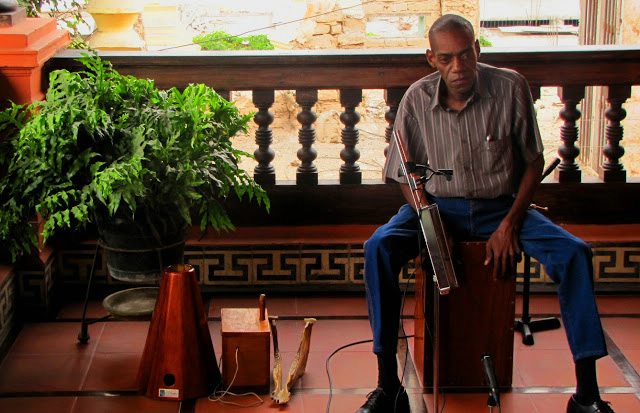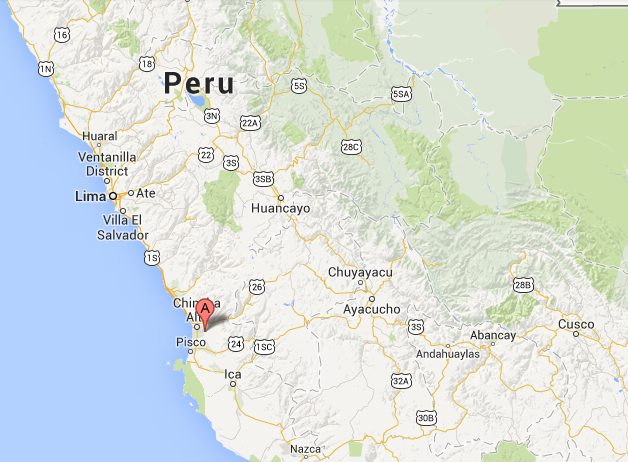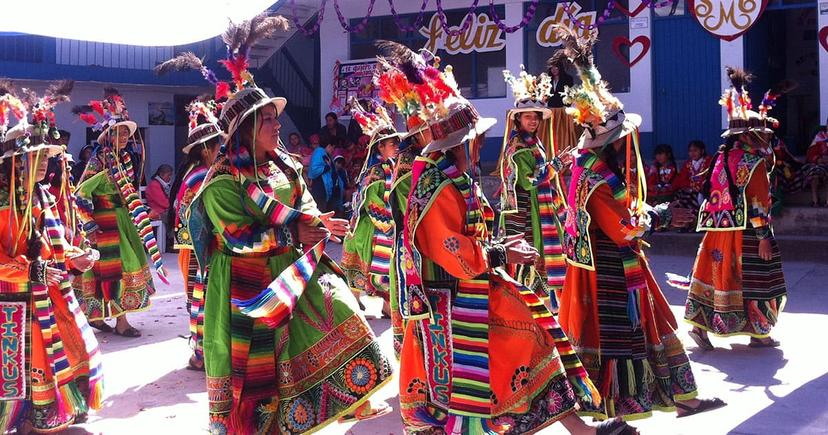
One hundred and twenty miles south of Lima is the culturally rich hamlet of El Carmen. With just a few hundred residents, El Carmen may have disappeared from the map long ago if not for one legendary family, the Ballumbrosios, who ignited the popularity of Afro-Peruvian music.
Family patriarch Amador Ballumbrosio, who died in 2009, was a master violinist, tap dancing virtuoso, and father of 12. He, along with Spanish guitarist Miguel Gonzalez, are credited with fusing the heavy, ribcage-rattling drum beats of his African homeland with traditional Peruvian tunes to create a fascinating hybrid known today as Afro-Peruvian music . This sound caught on quickly in the 1970s and still enjoys a worldwide following.
The men, for the most part, sit astride large, box-like wooden drum called a cajón, pounding rhythmically while the women dance – a frenetic, barefoot, torso-contorting dance that engages the entire body and is usually performed by two or four at a time.
Sometimes, one of the men will play the quijada or donkey’s jaw , an instrument that is precisely what its name suggests. To play it, slide a long, thin leg bone up and down the already-loose teeth to produce a clattering, clacking noise that is somehow very enjoyable.
When the women are finished, the men treat the audience to a rousing tap-dancing (zapateo) show, stomping, tapping, and stepping in perfect time with impossible speed. The entire family seems to have been born to dance and play an instrument. The Ballumbrosios are also adept at two other types of drums, the bongo and tumba, and a large bell called a cincero.
 An intimate, in-home opportunity to dance alongside the descendants of this
unique dance. Photo by Carla and Mike/Afro-Peruvian Hospitality
An intimate, in-home opportunity to dance alongside the descendants of this
unique dance. Photo by Carla and Mike/Afro-Peruvian Hospitality
The Ballumbrosio family still lives in a spacious home in El Carmen where Amador and his wife first set-up house. Every year they welcome music enthusiasts and inquisitive souls alike that come to watch the now fully grown Ballumbrosio children and grandchildren perform the music and dance .
For a first hand account of the Afro-Peruvian culture, ask for the Ballumbrosio house that’s located on San Jose 325, Chincha Alta in El Carmen. When you get there, you will be invited in and given a brief history of Amador Ballumbrosio and his influence in Afro-Peruvian music. The family then welcomes you to at least one of the many festivals they perform. They do all this expecting nothing in return and with warm smiles on their faces.
The town’s two main festivals, the Verano Negro in February and the Festival de las Danzas Negras in November are the best time to visit . El Carmen is home to several traditional bars and clubs that host Afro-Peruvian peñas – parties featuring Afro-Peruvian music, comedy and skits, all of which encourage participation from the crowd.
Paracas Tours:
Most major bus companies stop in Chincha en route to Ica and Nazca from Lima, which is about a 3 hour trip. Combis (minibuses) leave frequently for the 30 minute drive to El Carmen ($1 or S./2) from Chincha’s central market area, a few blocks from the main plaza, which is about a quarter of a mile walk from the Pan-America highway where the coastal buses stop.
 The marker pinpoints the small town of El Carmen, located south of Lima in
Peru. Map from GoogleMaps
The marker pinpoints the small town of El Carmen, located south of Lima in
Peru. Map from GoogleMaps
For more information, contact a travel advisor who can help you customize your own Peruvian adventure.



Email: [email protected]
Sign up to receive our newsletter for great articles, stunning photos, and special deals.